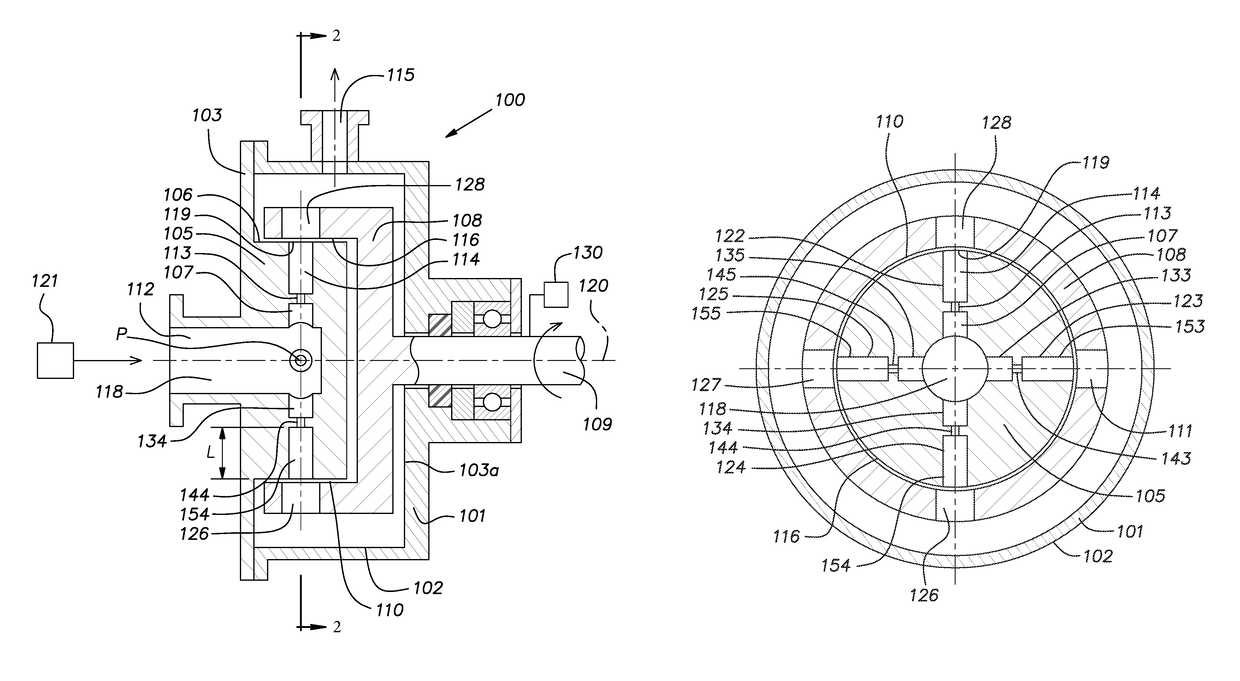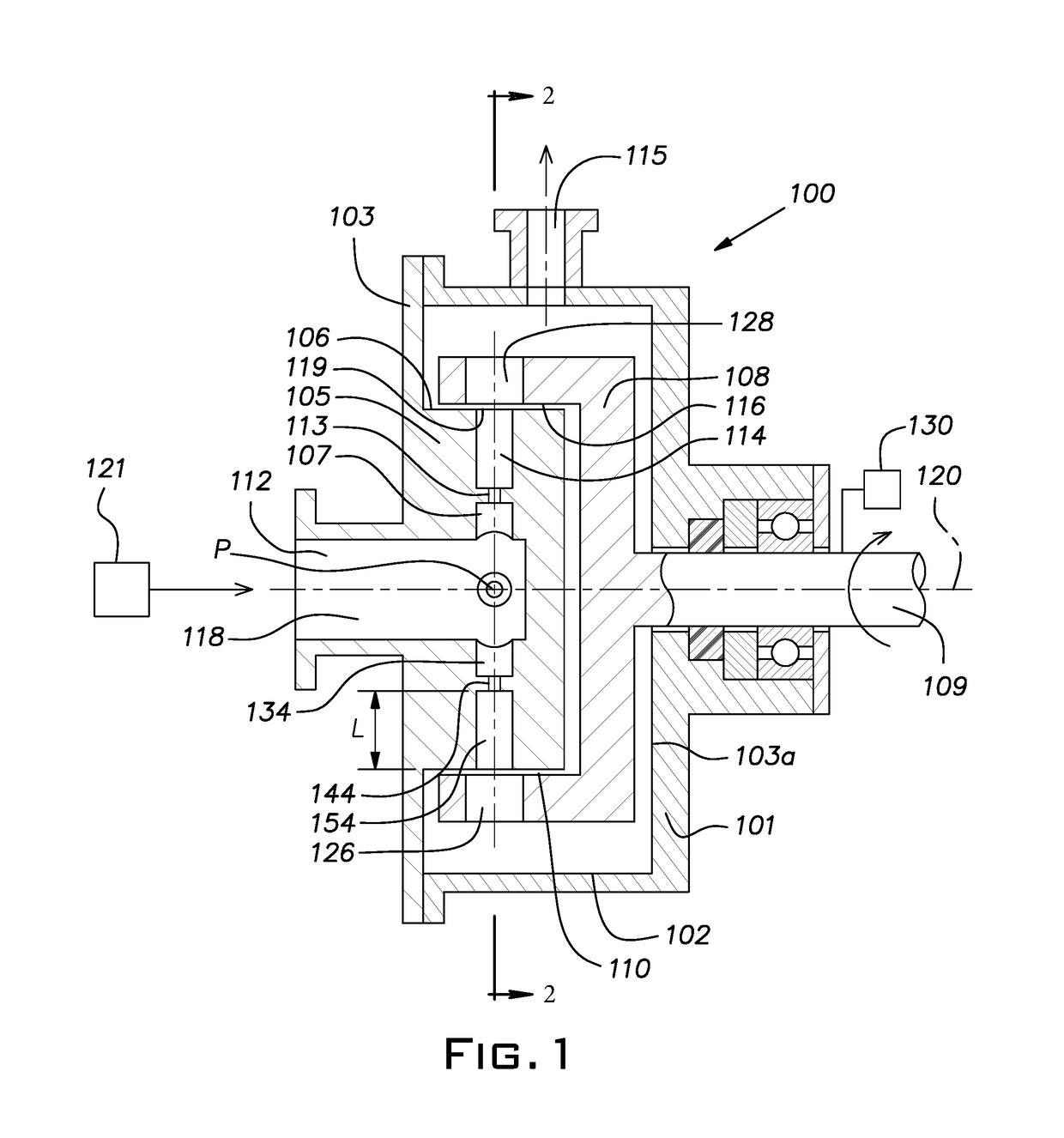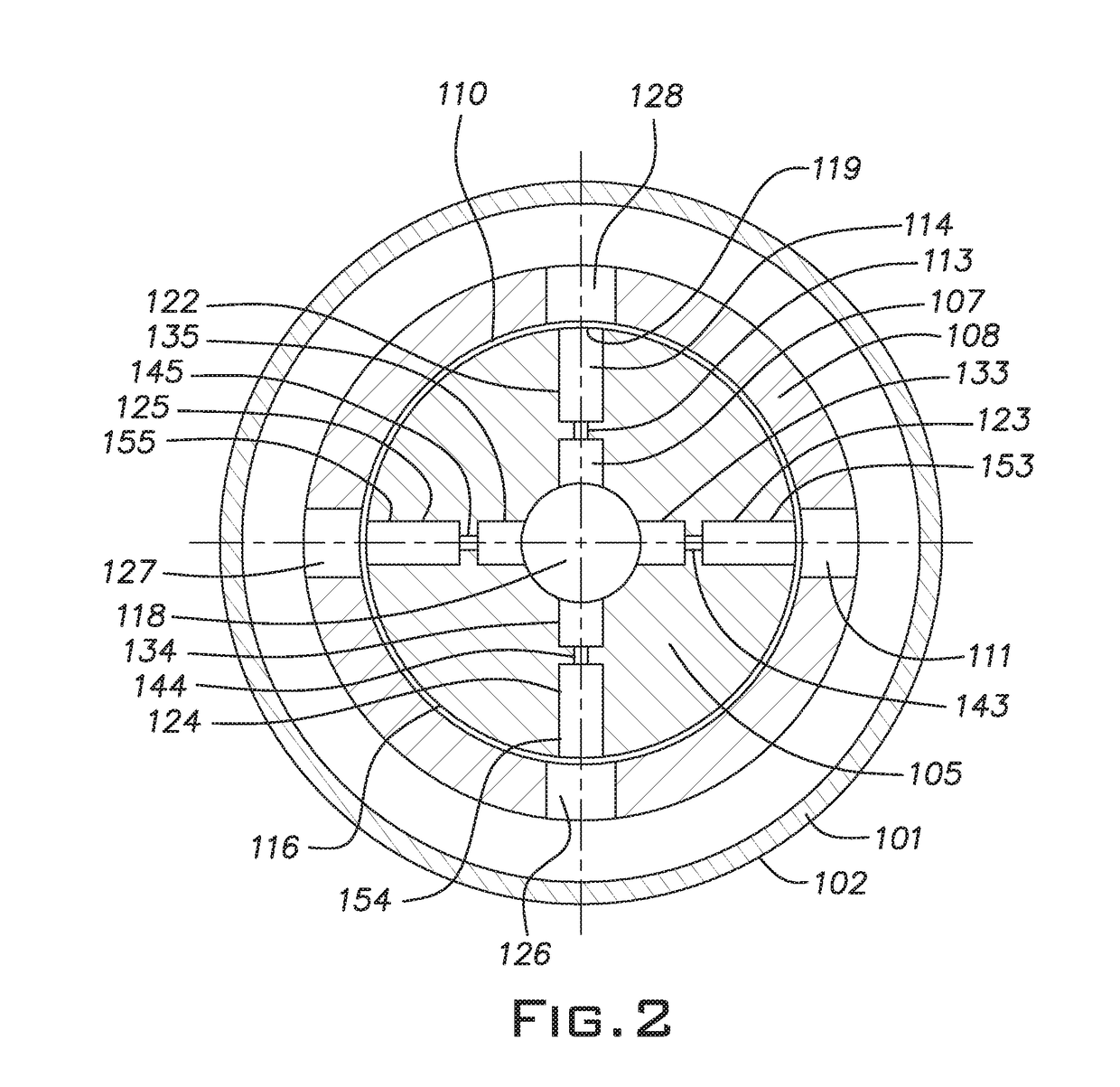Rotor and channel element apparatus with local constrictions for conducting sonochemical reactions with cavitation and methods for using the same
a sonochemical reaction and local constricting technology, applied in the direction of rotary stirring mixers, chemical/physical/physico-chemical processes, transportation and packaging, etc., can solve the problems of insufficient compression energy release, extreme physical and chemical conditions, and inability to transition to large-scale volumes, etc., to achieve significant compression energy release, and achieve the effect of reducing the number of steps
- Summary
- Abstract
- Description
- Claims
- Application Information
AI Technical Summary
Benefits of technology
Problems solved by technology
Method used
Image
Examples
example 1
[0065]A water stream with a flow rate of 3.96 gpm (gallons per minute) was passed from a chamber channel (Ø15 mm) through a local constriction (Ø3.5 mm orifice) into an outlet channel (Ø15 mm, length L=85 mm) with a velocity of at least 1.42 m / sec at the exit end from the outlet channel. Beyond the local constriction and in the outlet channel, a liquid jet containing cavitation bubbles with average diameter 0.12 mm localized was formed at the distance of 15 mm from the local constriction under static pressure Pst=50 psi. The cavitation bubbles primarily included air with presumably a pressure Pv=0.33 psi and a ratio of specific heats of air γ=1.401 for water temperature 22.2° C. and density p=997.8 kgm−3.[0066]a) Compression cavitation bubble under static pressure Pst. Driven by static pressure Pst=50 psi, the cavitation bubbles with diameter 0.12 mm, based on the Brennan equation [1] above, can generate on the distance r=5 mm a shockwave pressure Pp=60 psi. Maximum temperature insi...
example 2
[0070]A water stream with a flow rate of 3.96 gpm was passed from a chamber channel (Ø15 mm) through a local constriction (Ø3.5 mm orifice) into an outlet channel (Ø15 mm, length L=85 mm) at a velocity of at least 1.42 m / sec at the exit end from the outlet channel. Beyond the local constriction and in the outlet channel, a liquid jet containing cavitation bubbles with average diameter 0.30 mm localized was formed at the distance 30 mm from the local constriction under a static pressure Pst=10 psi. The cavitation bubbles primarily included air with presumably a pressure Pv=0.33 psi and a ratio of specific heats of air γ=1.401 for water temperature 22.2° C. and density p=997.8 kgm−3.
[0071]a) Compression Cavitation Bubble Under Static Pressure Pst.
[0072]Driven by static pressure Pst=10 psi, cavitation bubbles with diameter 0.30 mm, based on the Brennan equation [1] above, can generate on the distance r=5 mm a shockwave pressure Pp=30 psi. Maximum temperature inside adiabatically collap...
example 3
[0076]A water stream with a flow rate of 12.8 gpm was passed from a chamber channel (Ø15 mm) through a local constriction (Ø3.5 mm orifice) into an outlet channel (Ø15 mm, length L=85 mm) at a velocity of at least 4.57 m / sec at the exit end from the outlet channel. Beyond the local constriction and in the outlet channel, a liquid jet containing cavitation bubbles with average diameter 0.18 mm localized was formed at the distance 40 mm from the local constriction under a static pressure Pst=200 psi. The cavitation bubbles primarily included air with presumably a pressure Pv=0.33 psi and a ratio of specific heats of air γ=1.401 for water temperature 22.2° C. and density ρ=997.8 kgm−3.
[0077]a) Compression Cavitation Bubble Under Static Pressure Pst.
[0078]Driven by static pressure Pm=200 psi, cavitation bubbles with diameter 0.18 mm, based on the Brennan equation [1] above, an generate on the distance r=5 mm a shockwave pressure Pp=360 psi. Maximum temperature inside adiabatically colla...
PUM
 Login to View More
Login to View More Abstract
Description
Claims
Application Information
 Login to View More
Login to View More - R&D
- Intellectual Property
- Life Sciences
- Materials
- Tech Scout
- Unparalleled Data Quality
- Higher Quality Content
- 60% Fewer Hallucinations
Browse by: Latest US Patents, China's latest patents, Technical Efficacy Thesaurus, Application Domain, Technology Topic, Popular Technical Reports.
© 2025 PatSnap. All rights reserved.Legal|Privacy policy|Modern Slavery Act Transparency Statement|Sitemap|About US| Contact US: help@patsnap.com



